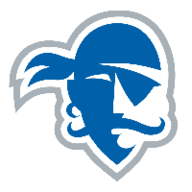Staunch Seton Hall supporters Kathy and Jim Leber '68 have generously donated $100,000 to support technology upgrades and enhancements, which ultimately resu...

shupirates.com
Jim and Kathy Leber donated $100,000 to enhance golf technology.
SOUTH ORANGE, N.J. – Staunch Seton Hall supporters Kathy and Jim Leber '68 have generously donated $100,000 to support technology upgrades and enhancements, which ultimately resulted in the gift of PuttView Indoor, an augmented reality putting system.
"People like Jim and Kathy truly care about the well-being and success of Seton Hall student-athletes," said men's golf Head Coach JT Harper. "This gift will most-certainly give them an advantage in tournament preparation, particularly during the winter. I can't thank them enough."
"We owe Jim and Kathy an enormous debt of gratitude for their tremendously generous gift," said women's golf head coach Natalie DesJardins. "Their dedication to our golfers has never wavered and is greatly appreciated. Their generosity puts us in a much stronger position competitively moving forward."
PuttView overlays information onto the green that could otherwise not be seen. A projector illustrates every aspect of a putt directly onto the green allowing golfers to have an intuitive and engaging way to practice putting. Located above the projector is a Ball Tracking camera, which tracks the ball in real-time. This technology provides valuable data and insights into your intentions in relation to your actual putt.
Some of the marquee golf programs in the country have integrated PuttView technology including USC, Tennessee, North Carolina and Michigan State to name only a few.
In the last 10 years alone, Seton Hall golf programs have combined to collect five BIG EAST Championships. The women have won three titles, while the men are the defending champions and winners of two in the last three years.









